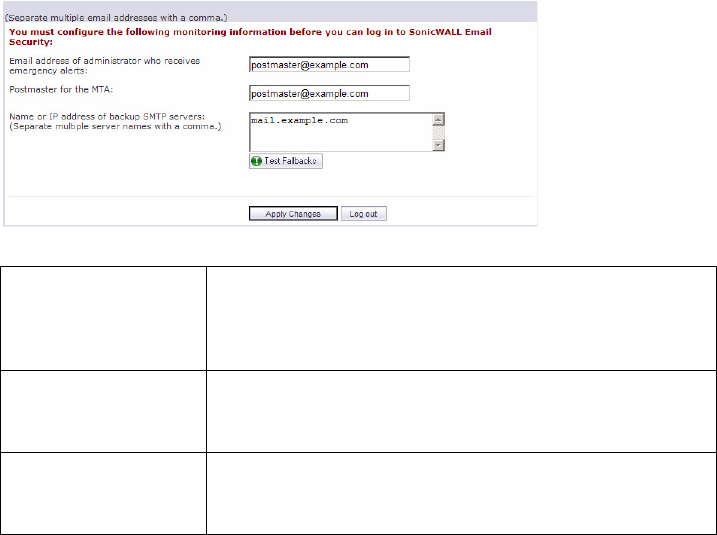User Guide
Table Of Contents
- Check Package Contents
- Any Items Missing?
- What You Need to Begin
- Record Configuration Information
- Overview of the SonicWALL Email Security Appliance
- Before You Register
- Creating a mysonicwall.com Account
- Registering Your SonicWALL Email Security Appliance
- Activating Your SonicWALL Email Protection Subscription and Dynamic Support
- Apply Power to the SonicWALL Email Security Appliance
- Connect Directly to the SonicWALL Email Security Appliance
- Login to the SonicWALL Email Security Appliance
- Navigate the SonicWALL Email Security Interface
- Change the Default Administrator Password
- Enter the License Keys for Each Service
- Set the Time and Date
- Use Quick Configuration to Set Up Email Management
- Verify Your SonicWALL Email Security Appliance Configuration
- Route Mail to Your SonicWALL Email Security Appliance
- Verify Mail from the Internet Through Your SonicWALL Email Security Appliance
- Configure Outbound Mail Filtering
- Windows XP
- Windows 2000
- Windows NT
- Weitere Hinweise zur Montage der Modell
- FCC Part 15 Class A Notice
- Notice About Modifying Equipment
- BMSI Statement
- VCCI Statement
- Canadian Radio Frequency Emissions Statement
- Regulatory Information for Korea
- Lithium Battery Warning
- Cable Connections
- German Language Regulatory and Safety Instructions

Page 12
4. The first time you log in to the SonicWALL Email Security appliance, you must
configure the monitoring settings before you can use the administrative interface:
5. Click Apply Changes. The License Management page should display.
Email address of the
administrator who
receives emergency
alerts:
The email address of the mail server administrator. Enter the
complete email address. For example, user@example.com
Postmaster for the
MTA:
The email address of the Mail Transfer Agent administrator.
Enter the complete email address. For example,
user@example.com
Name or IP address
of backup SMTP
servers:
Enter fully qualified domain names or IP addresses. For
example, mail2.example.com or 10.100.0.1.










